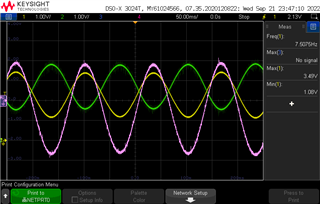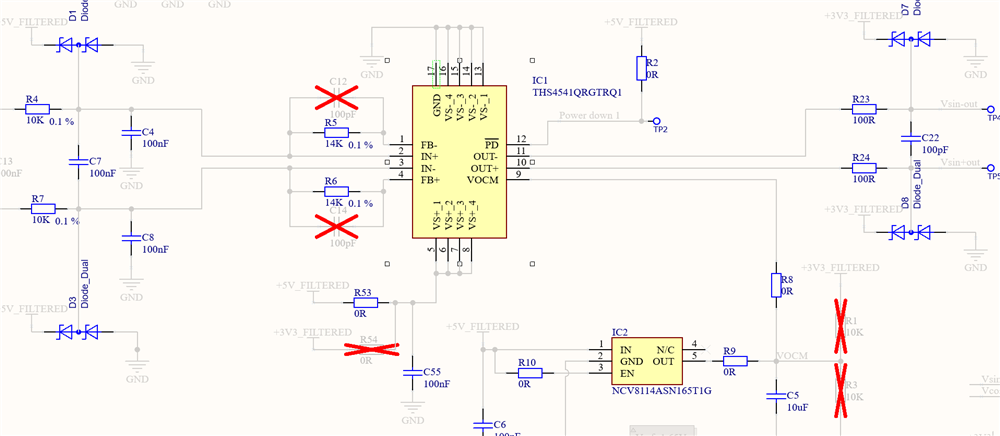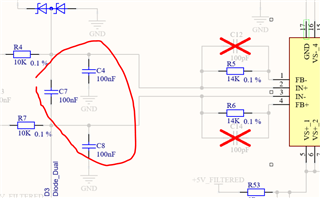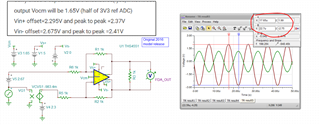Other Parts Discussed in Thread: THS4551
Hello,
I am using a TI FDA ( ref in the title) to amplify a sensor providing a sin+/sin- output. I originally thought both input signal would have the same Vicm of 2.5V and same amplitude with opposite phase but it's not the case( see picture).
The problem is now the FDA output are not symmetrical around Vocm. Does FDA can work with such input with different Vin common mode and different amplitude?
yellow Vin+, green Vin-
math =yellow-green (1V/div), not centred around zero.

Thanks,
Clement






